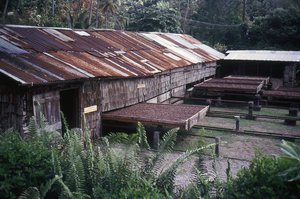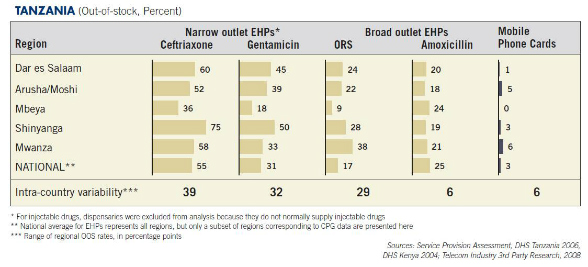I cannot think of anywhere in the world where I have been and not seen a Coca-Cola® beverage. Actually, while on a convoy in Iraq I remember being stopped along the roadside in the middle of nowhere. It had to be 120˚F plus. Out of thin air comes this guy in a stark white outfit carrying a foam cooler, and he was selling ice cold cans of Coca-Cola®. He was not a mirage, but he was actually there! After I paid my $1 to him, I had a little piece of home there that day in my hand.
Okay, I upgraded this in my mental file from “interesting” to “fascinating” once I started to dig into some of the reporting on this. Apparently Coca-Cola® has its detractors. I very seldom drink the beverage after making the switch away from sugary drinks a long time ago; however it rates up there with Tri-five Chevies, Disney® and baseball as universally recognized American icons. The story of how one Atlanta based pharmacist introduced a product that the world could not live without is interesting. Even more interesting is how it gets to all points beyond Georgia.
Ever since, I’ve been fascinated by the miracle of Coca-Cola in Tanzania. Thousands of smart people spend millions of dollars trying to get life-saving medications to the people who need them. And too often, we fail. But Coke is everywhere in this country, from the fanciest hotels in Dar es Salaam to little shops in the Serengeti. They’re doing something right (Gordon, 2009).

Coca-Cola® in Africa, really? Yes! Actually it is rather at home there since the first bottling plant arrived there in 1928 in Johannesburg, South Africa. Today Coca-Cola® is Africa’s largest employer. Historically, Cola beans come from Western Africa.
Cola “nuts,” not real nuts but the interior part of the fleshy seeds of plants of the genus Cola . . . are chewed fresh, or dried and ground to a powder for making into a drink. They have similar effect to tea or coffee, since they contain the same alkaloid, caffeine. . . . Although the formulae of Coca-Cola and similar drinks are supposed to be secret, it seems safe to assume that they contain cola (Davison, 2002).
So the dilemma of how a packaged liquid can make it to the most remote corners of the globe, but other medical products cannot has come up more than once. As a matter of fact, some very big philanthropists like Melinda French Gates of The Gates Foundation have even taken notice of this. You can watch her speak about NGO’s working to understand and emulate Coca-Cola’s® strategy for success in this video:
So if Coca-Cola® can reach deep into Africa, what would it take to get medical supplies there as well? The question becomes more difficult when you consider the logistics involved and the type of medical supply. Coca-Cola® has done their homework. They have very tight supply chains and feedback loops to get relevant market data back to them and adjust distribution accordingly. Health clinics in the bush do not have that type of information flow. As you can see from the chart below, you are 8 times more likely to find a mobile phone card in Tanzania than Amoxicillin.

(Hayford, Privor-Dumm & Levine, 2011)
Furthermore, the nature of the products are different. Coca-Cola® has transported condoms and literature to remote villages with shipments of product.
Plans call for Coke over the next two to three months to lend a marketing executive from one of its African offices to UNAIDS for at least a year. At the same time, UNAIDS will identify other needs with which Coke and its bottlers can help, such as delivering condoms, or printing and delivering brochures on prevention and treatment of AIDS. The company and its bottlers will pick up the costs (McKay, 2001).
To date, I could not find where they have actually piggy backed onto beverage shipments the holy-grail of medical supplies —anti-retroviral medications or AIDS medications. Why not? Because these medications need to be kept very cold in order to be potent. Imagine trying to transport an ice cream cone home on a summer day. Now take that example and put it in a truck through sub-Saharan Africa and the problem becomes extremely difficult to solve. Ostensibly, this is why the efforts have been focused on prevention (i.e. condoms and literature).
To be clear, you are not seeing an alliance between public health officials and a high fructose corn-syrup based beverage manufacturer because the product is good for people. Rather, you are seeing the former of these strange bed fellows trying to strategize like the later so that they can correct these preventable epidemics. This is a stroke of pure pragmatism, but it is working and hopefully they can save lives. Nevertheless, it is noteworthy that they trail was blazed by a beverage company trying to establish a market for their product and now that it is established, they are reaching back to bring other much more essential items to those in need.
Wilson
Pro Deo et Patria
Citations:
Gordon, M. (2009, May 12). Coca-Cola and Public Health. Retrieved from http://news.change.org/stories/coca-cola-and-public-health
Davison, A. (2002). The Penguin Companion to Food. (pp. 243-244). Chicago: Penguin Books Ltd.
Hayford, K., Privor-Dumm, L., & Levine, O. (2011). Improving access to essential medicines through public-private partnerships. Manuscript submitted for publication, International Vaccine Access Center (IVAC), Johns Hopkins University, Baltimore, MD. Retrieved from http://www.jhsph.edu/ivac/resources/IVAC-Improving-Access-to-Essential-Medicines.pdf
McKay, B. (2001, June 20). Coca-cola to tap its marketing muscle to help fight aids. Retrieved from http://www.aegis.org/DisplayContent/DisplayContent.aspx?sectionID=75065
Photo Credits:
Vaccine by ml6mQe2
Cola Beans drying in Africa by mz2MwqU
Links for further investigation:
Click to access TCCAF_The_Coca-Cola_Story.pdf
http://blogs.cgdev.org/globalhealth/2010/11/coke-in-africa-please-market-diet.php
http://papers.ssrn.com/sol3/papers.cfm?abstract_id=1656386
http://www.jhsph.edu/ivac/resources/IVAC-Improving-Access-to-Essential-Medicines.pdf (this one is good, but has a lot of acronymns)
http://www.uniteforsight.org/global-health-university/science-of-healthcare-delivery
http://news.change.org/stories/coca-cola-and-public-health
http://www.ted.com/talks/melinda_french_gates_what_nonprofits_can_learn_from_coca_cola.html
http://old.globalhealth.org/news/article/1060
http://europe.cnn.com/BUSINESS/programs/yourbusiness/stories2001/coke.aids/
